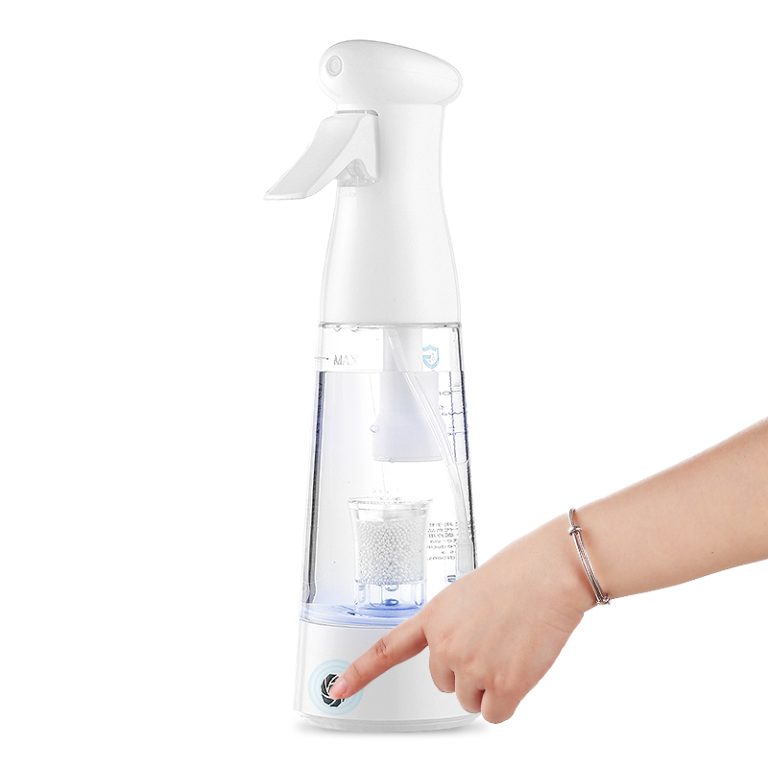Introduction
Ever noticed your gym clothes or towels develop a sour smell even after washing? Clothes developing unpleasant odors is a common issue in daily life, especially after exercise or in humid environments. The smell is not caused by sweat itself but by the metabolic byproducts produced when microorganisms on the skin break down sweat and sebum. Key bacteria responsible for these odors include Moraxella osloensis, Corynebacterium, and Staphylococcus. This article analyzes the main causes of clothing odors, explores the mechanisms of these bacteria, and introduces an efficient solution—the ARGENTUMIX silver ion generator—to tackle the problem.
Main Causes of Clothing Odors
The core reason clothes develop odors is the breakdown of organic compounds in sweat and sebum by microorganisms (bacteria), producing volatile metabolic byproducts (e.g., sulfides, ammonia, short-chain fatty acids). This process is influenced by multiple factors and can be divided into three stages:
Pre-Washing Causes (During Wear and Contamination)
1. Sweat Composition:
· Sweat is primarily water with small amounts of electrolytes (e.g., sodium, potassium) and is initially odorless. However, proteins, fatty acids, and amino acids in sweat serve as nutrients for bacteria.
2. Sebum Secretion:
· Oils (e.g., triglycerides) secreted by sebaceous glands are broken down by bacteria, producing short-chain fatty acids that emit a rancid smell.
3. Bacterial Metabolism:
· Bacteria on the skin decompose sweat and sebum, generating volatile organic compounds (VOCs) like sulfides, ammonia, and carboxylic acids, leading to odors.
4. Humid Environments:
· Warm, moist microenvironments (e.g., underarms, feet) accelerate bacterial metabolism, speeding up odor formation.
Research Support:
· Experiments show that bacterial counts on cotton T-shirts can increase 1000-fold within 24 hours after exercise (Applied Microbiology, 2020).
Causes During Washing
1. Incomplete Cleaning:
· Residual sweat, sebum, and other secretions trapped in fabric fibers provide nutrients for bacteria, allowing them to thrive and produce odors.
2. Dirty Washing Machines:
· Accumulated grime in washing machines, especially in hidden compartments, can ferment or mold, fostering bacterial growth and causing secondary contamination.
3. Improper Detergent Use:
· Too little detergent fails to remove stains and sweat, while excess detergent may leave residues that react with airborne chemicals, creating unpleasant smells.
4. Bacterial Growth and Byproducts:
· Phosphorus in detergents can promote bacterial survival. In damp conditions, bacteria multiply and produce metabolic byproducts, worsening odors, especially during humid seasons.
Post-Washing Causes (Drying and Storage)
1. Poor Drying Conditions:
· Insufficient airflow or humid environments during drying can lead to mildew and sour smells. Clothes left damp for extended periods become breeding grounds for bacteria.
2. Fabric Material:
· Natural fibers (e.g., cotton, linen, silk, wool) trap more dirt and moisture, making them prone to odors, while synthetic fibers, with smoother surfaces, retain fewer residues.
In summary, clothing odors stem from multiple factors, all ultimately linked to bacterial growth and metabolic activity.
Key Bacteria and Their Roles
1. Moraxella osloensis
A major contributor to odors, especially in sportswear and socks.
· Breaks down proteins and fatty acids in sweat, producing sulfides and carboxylic acids (e.g., “onion-like” smells).
· Survives regular washing and thrives in damp conditions.
· Highly associated with body odor, particularly in underarms and feet.
2. Corynebacterium
A resident skin bacterium, abundant in moist areas like underarms.
· Decomposes sebum triglycerides, generating short-chain fatty acids (e.g., isovaleric acid) with a “cheesy” or sour smell.
· Resists alkaline environments (e.g., soap), remaining active post-wash.
3. Staphylococcus
Common skin bacteria; some strains contribute to odors.
· Breaks down proteins, releasing ammonia and thiols (pungent smells).
· Collaborates with other bacteria on poorly washed clothes to intensify odors.
How to Reduce Bacterial Odors?
1. Thorough Cleaning:
· Use enzyme-based detergents (protease, lipase) to break down bacterial residues.
2. High-Theat Drying or Sunlight:
· Heat (>60°C) kills most bacteria; UV light also inhibits growth.
3. Antimicrobial Fabrics:
· Opt for silver-ion or copper-infused fabrics to limit bacterial attachment.
4. Dry Storage:
· Ensure clothes are completely dry before storing to prevent bacterial regrowth.
Why ARGENTUMIX Silver Ion Generator Works Better
Traditional methods (e.g., chemical disinfectants) may irritate skin or harm the environment. ARGENTUMIX offers a safe, eco-friendly alternative:
1. Effective Sterilization:
Electrolyzes tap water to produce 1-3 ppm silver-ion solution, eliminating 99.9% of bacteria (including Moraxella and Corynebacterium).
2. Odor Prevention:
Silver ions inhibit bacterial regrowth, reducing sulfide/ammonia production by 90–95%.
3. Safety & Eco-Friendliness:
Non-toxic (passed acute oral/skin irritation tests), ideal for sensitive users.
Requires only a machine and tap water, eliminating plastic waste.
4. Versatility:
Suitable for sportswear, socks, underwear, pet items, and washing machine cleaning.
User Testimonial
Marathoner Mr. Zhang:
“Even with disinfectants, my workout clothes smelled. After soaking in ARGENTUMIX solution for 20 minutes post-wash, they stayed fresh for a week. My chemical-triggered allergies also improved!”
Conclusion
Clothing odors arise from bacterial activity, but traditional cleaning often falls short. ARGENTUMIX combines high efficacy, safety, and sustainability, reducing 99.9% of odor-causing bacteria while protecting health and the planet. Adopting scientific solutions ensures long-lasting freshness.
Tip: Regularly soak clothes in silver-ion solution and follow proper washing/drying practices for odor-free garments.
Learn More: explore ARGENTUMIX’s benefits →
Independent lab tests confirm 99% reduction of Moraxella osloensis and Staph. [DOWNLOAD FULL REPORT]



